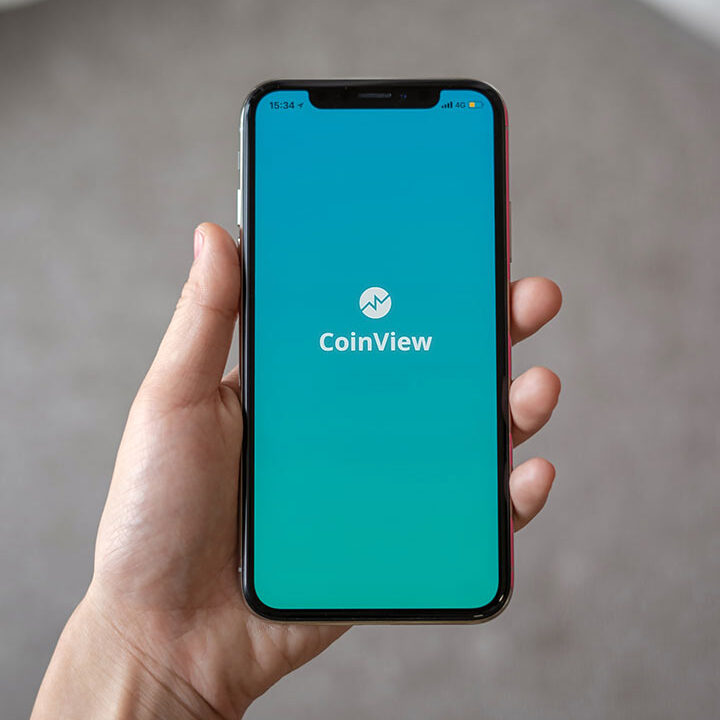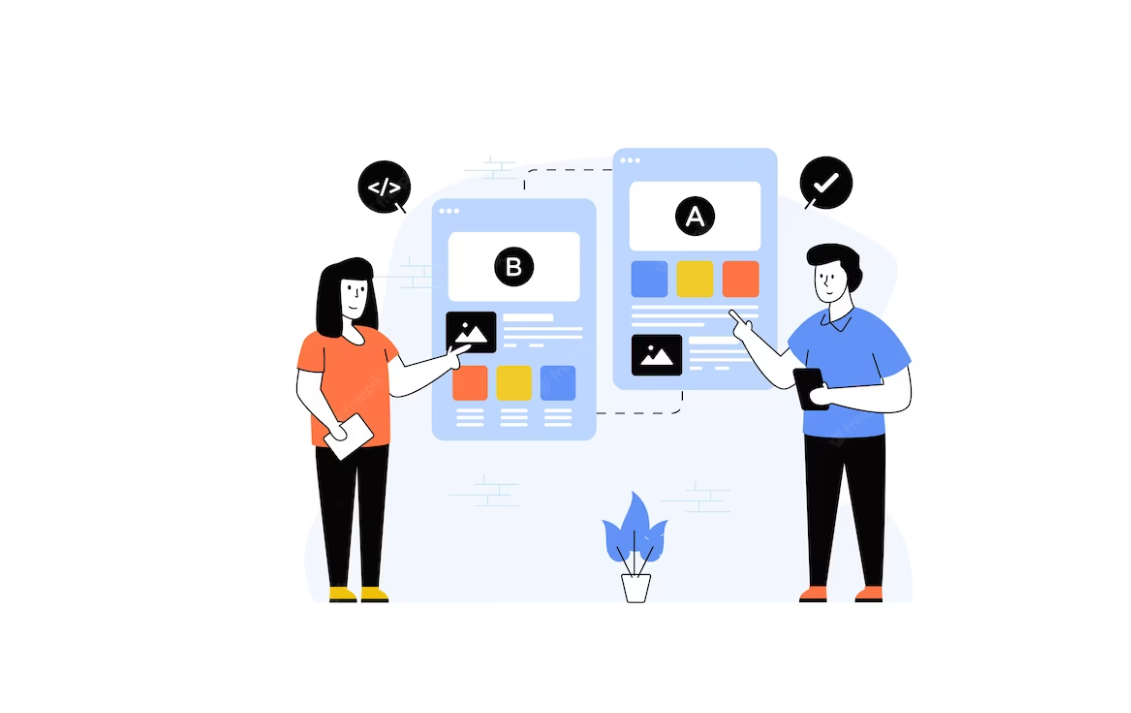PWAs vs Native Apps: Which Is Best for Your Business in 2025
Organizations constantly seek inventive methods to captivate customers and deliver flawless user experiences in the ever-evolving business world. When it comes to mobile app development, PWAs vs Native Apps are two prominent choices. This guide dissects the difference between PWAs vs Native Apps, assesses their advantages and disadvantages, and equips you with the necessary insights to decide on the most suitable approach for your business.
Table of Contents
Understanding Progressive Web Apps (PWAs)
Let’s start by defining a Progressive Web App (PWA). A PWA is a mobile-friendly website that offers users an app-like experience. It combines the best of both worlds – the accessibility of a website and the functionality of a mobile app. Unlike traditional web pages, PWAs can be accessed directly through web browsers without the need for installation from an app store.
PWAs are designed to be responsive and adaptable to various operating systems and screen sizes. They offer a user-friendly interface and provide push notifications, offline functionality, and seamless updates. Some famous examples of PWAs include Spotify and Starbucks.
Pros of Progressive Web Apps (PWAs)
PWAs offer many benefits for businesses. Let’s explore why PWAs are better than Native Apps for many use cases:
- Cross-platform compatibility: PWAs are built with web technologies like HTML, CSS, and JavaScript, making them compatible with multiple platforms and devices. They can work across different operating systems on any modern web browser, including desktops, smartphones, and tablets.
- Offline functionality: One of the critical advantages of PWAs is their ability to function offline or with limited connectivity. They can cache essential resources and content, allowing users to access and interact with the application even when not connected to the internet. This offline support enhances user experience and ensures uninterrupted usage.
- Discoverability and accessibility: One key benefit in the PWA vs Native App SEO benefits discussion is that PWAs can be indexed by search engines. This allows users to find PWAs via web searches, unlike native apps that rely on app store listings.
- Cost-effective development: Developing a PWA requires a single codebase that can run across multiple platforms. This reduces development and maintenance costs compared to building separate native apps for different operating systems. Additionally, updates and bug fixes can be deployed instantly, eliminating users needing to update the app manually.
- Faster and seamless updates: PWAs do not depend on app store approvals. Developers can deploy updates directly to the server, ensuring users always have the latest version of the application. This agility allows for faster bug fixes, feature enhancements, and better user experience.
Cons of Progressive Web Apps (PWAs)
While PWAs offer numerous advantages, there are also some limitations to consider:
- Limited native functionality: While PWAs can access many device capabilities through browser APIs (such as camera, geolocation, and push notifications), they may still lack certain advanced functionalities provided by native apps. Native apps have deeper integration with the operating system, effectively leveraging specific features and hardware components.
- Performance limitations: Although PWAs have made significant advancements in performance, they may not match the speed and responsiveness of native apps. Native apps have the advantage of being optimized for specific platforms, utilizing the full potential of the underlying hardware. PWAs run in a browser environment, which introduces some performance overhead.
- Limited support on older browsers: Some older web browsers may need to fully support the advanced web technologies and APIs required for PWAs. This can limit the reach of PWAs to users with up-to-date browsers or the latest devices, potentially excluding a portion of the audience.
- App store limitations: Unlike native apps, PWAs may not have access to the same app store features and distribution channels. They may not appear prominently in app store listings or benefit from app store-specific marketing and promotional opportunities. This can affect the discoverability and reach of PWAs.
- Lack of user awareness: Many users may need to be more familiar with PWAs or understand their concept. They may expect a traditional app installation process or need to recognize a PWA’s added functionality and benefits. Educating users about PWAs and their advantages may be necessary to increase adoption and usage.
Exploring Native Apps
On the other hand, native apps are developed explicitly for a particular mobile operating system, such as iOS or Android. Native apps use platform-specific programming languages and leverage the device’s hardware and software capabilities. They offer superior performance, access to device features like cameras and sensors, and a high level of interactivity.
Native apps require users to download and install them from app stores. They are tailored to the specific platform, resulting in a seamless user experience and optimal performance. Examples of native apps include the pre-installed apps on your smartphone, such as the App Store for iOS and the Play Store for Android.
Pros of Native Apps
Now let’s explore the advantages of native apps for businesses:
- Performance and speed: Native apps are built using platform-specific programming languages (such as Java or Kotlin for Android and Swift or Objective-C for iOS), which allows them to leverage the full capabilities of the underlying hardware and operating system. This often results in better performance, smoother animations, and faster response times compared to other app development approaches.
- Access to device features: Native apps have deep integration with the operating system and can access a wide range of device features and APIs. This enables them to leverage functionalities such as cameras, contacts, sensors, GPS, and more, providing a rich and immersive user experience.
- Enhanced user experience: Native apps are designed and optimized for a specific platform, adhering to the platform’s UI/UX guidelines and design principles. This results in a native look and feels, seamless navigation, and intuitive user interactions, leading to a more engaging and satisfying user experience.
- App store presence and discoverability: Native apps can be listed in platform-specific app stores (such as Google Play Store or Apple App Store), providing a centralized distribution platform and enhanced discoverability to a large user base. App stores offer marketing opportunities, user ratings, reviews, and the potential for featured placements, which can increase visibility and downloads.
- Monetization options: Native apps provide various monetization options, including in-app purchases, subscription models, ad integrations, and more. These options allow developers to generate revenue directly from their apps and achieve higher profitability.
Cons of Native Apps
- Development and maintenance costs: Developing native apps for multiple platforms requires separate codebases and expertise in platform-specific programming languages, which can increase development costs and time. Maintaining and updating various codebases for bug fixes, feature enhancements, and platform updates can also be resource-intensive.
- Platform dependency: Native apps are tied to a specific platform, meaning separate development efforts are required for each platform (e.g., Android and iOS). This can limit the app’s reach and potentially exclude users on other platforms.
- App store restrictions and approval process: Native apps are subject to app store guidelines and approval processes, which can introduce delays and additional hurdles for deployment. App store policies may restrict specific functionalities and content types or require adherence to specific design guidelines, limiting the app’s flexibility.
- Fragmentation and compatibility issues: With different versions of operating systems and device capabilities across platforms, native app developers need to consider fragmentation and ensure compatibility across various devices, screen sizes, and OS versions. This can add complexity to the development process and require additional testing and optimization efforts.
- User acquisition and retention challenges: Although app stores provide a large user base, the competition is intense, making it challenging for new native apps to acquire users and gain visibility. Additionally, retaining users and driving regular engagement can be difficult, as users have numerous app choices and may uninstall or stop using an app if it does not meet their expectations.
Choosing between PWA and Native App
When deciding between PWAs and native apps, consider the following factors:
- PWAs vs. Native Apps for Developers: From a developer’s standpoint, PWAs offer the advantage of simplicity. Developing a PWA requires knowledge of standard web technologies, such as JavaScript, HTML, and CSS, and can be deployed across multiple platforms with a single codebase, reducing development time and costs. On the other hand, native apps require platform-specific programming skills and separate codebases for iOS and Android, making them more time-consuming and expensive.
- PWAs vs. Native Apps for Businesses: When considering PWAs vs Native Apps for businesses, PWAs provide an attractive solution for companies with limited budgets and faster time-to-market requirements. They offer cross-platform compatibility and lower development costs. However, businesses that require high performance, access to advanced hardware features, and deeper user engagement may find native apps more suitable.
- Functionality: Native apps may be the better choice for advanced device integration, while PWAs can be more cost-effective for simpler apps.
- Budget: Native apps often have higher development costs due to separate codebases for each platform. PWAs offer savings by requiring only one codebase.
- Time to market: If you need to launch quickly, PWAs can be built faster since they bypass app store approvals.
- Marketing: Native apps benefit from app store listings, while PWAs can drive traffic through search engine optimization (SEO).
Making the right choice: PWA or Native Apps?
Novas Arc Application Development is here to guide you in choosing between Progressive Web Apps (PWAs) and Native Apps, depending on your specific requirements. Our Full Cycle Software Development and Product Development teams have the expertise to analyze your business needs and advise you on the most suitable approach for establishing a robust mobile presence.
At Novas Arc, we understand that every business has unique requirements and objectives. Our experts will carefully evaluate your budget, development timeframes, marketing strategy, and business goals to help you make an informed decision. We are committed to providing tailored solutions that align with your needs, ensuring that your mobile application delivers optimal results.
Whether you choose the versatility of PWAs or the performance of Native Apps, Novas Arc Application Development is here to support you throughout the entire development process. We are dedicated to delivering high-quality products for web, mobile, and desktop platforms, empowering your business to thrive in the digital landscape.
Experience the Novas Arc difference today! Connect with us.
FAQS
Q1. What is the difference between PWA and native apps in 2024?
In 2024, the difference between PWAs and native apps remains significant in several key areas. PWAs are web-based applications that can be accessed through browsers and provide an app-like experience. They are platform-agnostic, meaning they can work on any device with a browser. On the other hand, native apps are specifically built for platforms (iOS or Android) using platform-specific programming languages and are downloaded from app stores. While native apps offer better performance and deeper integration with device features, PWAs are more cost-effective and accessible.
Q2. Is PWA better than native apps?
Whether PWAs are better than native apps depend on your specific needs. PWAs are ideal for businesses that need a cross-platform solution with lower development costs and faster market time. They offer SEO benefits and can work offline. However, native apps have superior performance, access to device features, and richer user experiences. Native apps are also more suited for applications that demand high-speed graphics or rely on advanced hardware.
Q3. Is PWA the future?
PWA technology is gaining momentum and is considered part of the future of app development. As more businesses seek cost-effective solutions and improved user engagement without being tied to specific platforms, PWAs present an appealing alternative. Their ability to offer an app-like experience without requiring installation and better SEO and offline functionality make them a strong contender in mobile and web development.
Q4. Can PWA replace native apps?
While PWAs offer many advantages, they are unlikely to completely replace native apps in all scenarios. Native apps still have the edge regarding high-performance applications, access to device-specific features, and a rich, immersive experience. However, for businesses looking for a fast, cost-effective way to reach a wider audience, PWAs can be a viable replacement in certain cases, particularly where advanced hardware integration isn’t required.
Author








